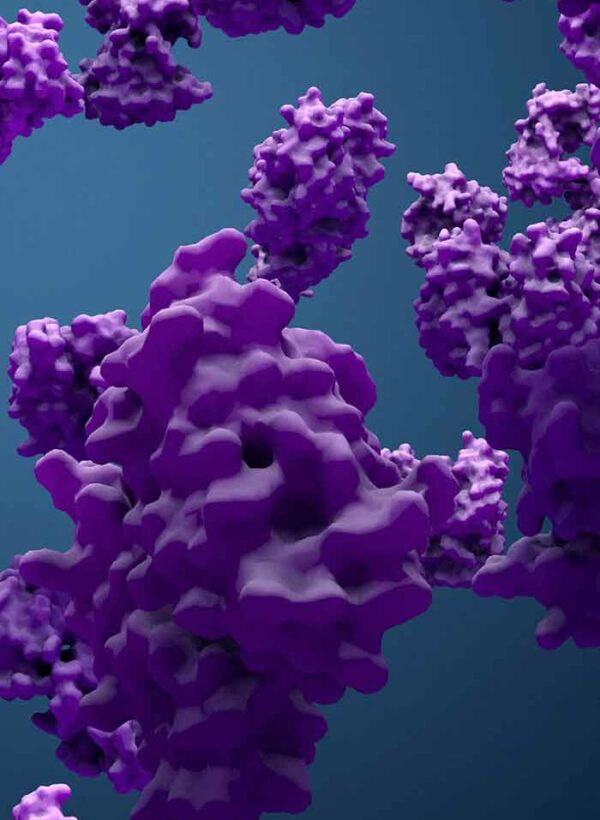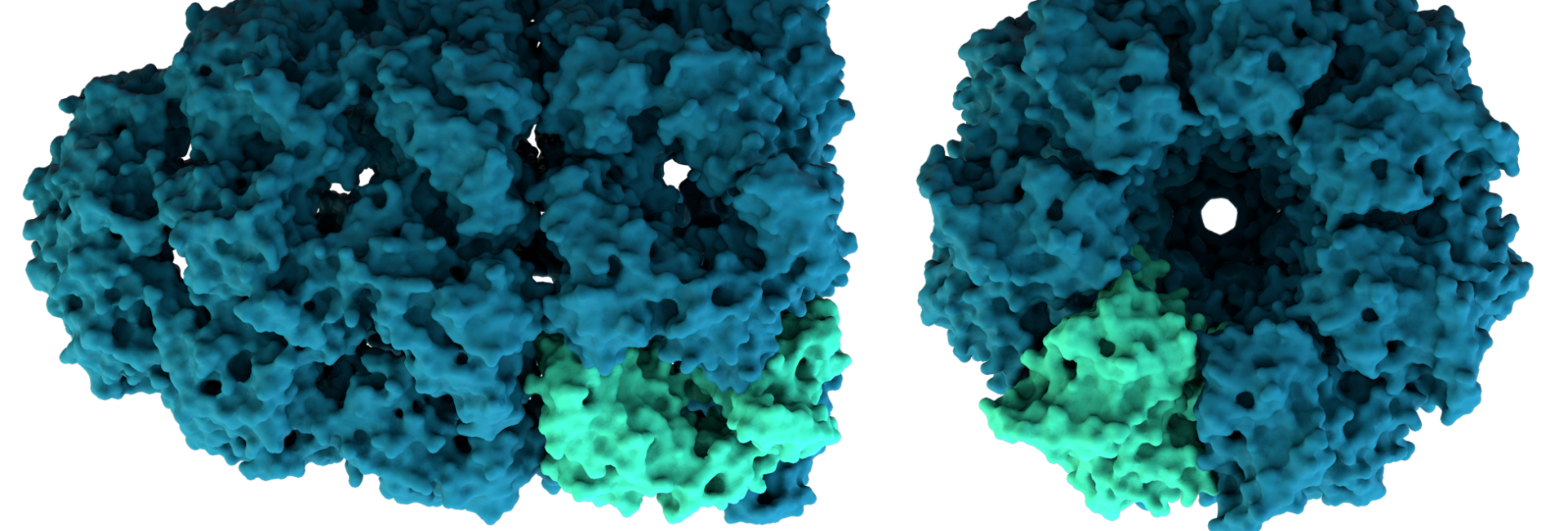Advantx is pioneering the development of innovative disease-modifying therapies targeting Sigma proteins, which modulate multiple disease-causing pathways and simultaneously contribute to key protein and cellular homeostasis.

Protein Homeostasis
The protein’s capacity to perform its function depends on its ability to acquire and maintain a specific structure, correctly folded according to its native conformation. Chaperones are proteins highly conserved across species that help other proteins fold, by binding to nonnative conformations and giving them a fast route to restore a high degree of foldedness. Each protein is damaged at a rate determined by its degree of foldedness. Protein homeostasis or proteostasis in young and not ADN-damaged cells is achieved by the degradation of misfolded proteins associated with high growth rates. However, protein synthesis rates decrease over time by as much as 10-fold, and as new protein synthesis slows, healthy protein production no longer keeps pace with age, disease (such as neurodegenerative disorders, cardiovascular diseases, cancer, and substance abuse), or DNA-related damage, causing increased levels of misfolding of the proteome. With chaperones becoming increasingly affected with futile attempts to refold irreversibly damaged proteins, misfolded proteins approach their solubility limit, and aggregates of toxic proteins increase exponentially.
Proteostasis becomes even more important for those nondividing cells such as neurons, where Sigma chaperones play a key role.
Sigma proteins are the only ligand-operated chaperone receptor proteins and are intracellular proteins present in the mitochondria-associated membranes of the endoplasmic reticulum (MAMs) and strongly expressed in motoneurons, playing a key role in proteostasis by controlling, coordinating the folding and degradation of certain proteins that contribute to balancing overall protein expression levels, and preventing degradation of key multifunctional inter-organelle signaling proteins, regulating the transport and translocation of secreted proteins, and restoring cellular homeostasis. Targeting Sigma proteins, Advantx drugs can selectively modulate one or two receptors and their pathways in the specific way needed for each disease, but also reprogram the natural protein recycling machinery in every cell cycle.
SIGMA Platform
Proteins Universe
Proteins in nature
>200m estimated structuresHuman Proteins
>20k protein typesDruggable Proteins
>2k estimated targetsApproved Targets
>800 FDA approvedsource: The Human Protein Atlas
Cellular Proteostasis Network failures account for almost half of all human diseases
FOLDING
The Proteostasis Network includes the synthesis, folding, and degradation of proteins. Proteins have dynamic structures consisting of long polypeptide chains of ~50 or more “residues” that undergo chain motions on time scales ranging from picoseconds to seconds. Proteins fold in three dimensions into unique structures determined by their amino acid sequences and are organized hierarchically from so-called primary structure to quaternary structure. The higher-level structures are motifs and domains. The ribosome is the central quality control organelle by checking the conformation of the nascent protein and recruiting protein folding and translocation machineries. During protein translation, the so-called “optimal codons” are recognized by highly available tRNAs, which speeds up the translation process. By contrast, “non-optimal” codons are recognized by less abundant tRNAs, thus slowing down translation at key structural motifs in order to facilitate proper protein folding. Chaperones assist the folding process in order to avoid inappropriate interactions leading to misfolded states.
Sigma chaperones have a unique amino acid sequence and have no homology with known mammalian proteins, residing in the cholesterol-rich region of the endoplasmic reticulum mitochondria-associated membranes (MAM), where assist in folding, refolding, and translocation of different proteins (including IP3R) in response to ER stress (UPR, unfolded protein response).
Learn more about Proteostasis
DEGRADATION
A continuous cell cycle of synthesis and degradation allows the replacement of old proteins with new ones and alteration of the proteome composition during cell differentiation or in response to intra- or extracellular stress. In any cell, two major intracellular protein degradation systems exist, the ubiquitin-proteasome system (UPS), and the autophagy-lysosomal pathway (ALP), Whereas ALP engages lysosomal proteolytic enzymes to degrade membrane proteins and aggregated and disease-associated proteins, especially under pathogenic and aging conditions, the UPS is involved in the targeted degradation of cytosolic and nuclear proteins but is limited in the degradation substrates. Additionally, mammalian cells have the Chaperone-mediated autophagy (CMA) the only type of autophagy able to selectively degrade cytosolic proteins in lysosomes. The endoplasmic reticulum has a specific associated protein degradation mechanism (ERAD) which is a highly conserved quality control pathway that eliminates damaged or unassembled ER proteins. Dysfunctions in the degradation systems contribute to the toxic aggregation of misfolded, damaged o excessive proteins.
Sigma chaperones are part of the ERAD machinery involved in the degradation of sphingolipid enzymes and aberrant mutant proteins in the nucleus, and also regulate Mitophagy Response, protein degradation via UPS–mediated, and autophagosome-lysosome fusion degradation mechanisms.
Advantx Pharmaceuticals focuses on complex diseases where the failure of the proteostasis network clearly represents a main trigger in the onset and progression of such diseases, designing disease-modifying treatments to restore proteostasis while modulating altered pathways on etiopathological mechanisms
Explore our therapeutic focus.
RELATED PUBLICATIONS
Advantx Candidate
ADV 368 LAD
Late-onset Alzheimer’s
Bispecific Sigma1 and Sigma2
Potent Agonist and Antagonist
Positive Results.

